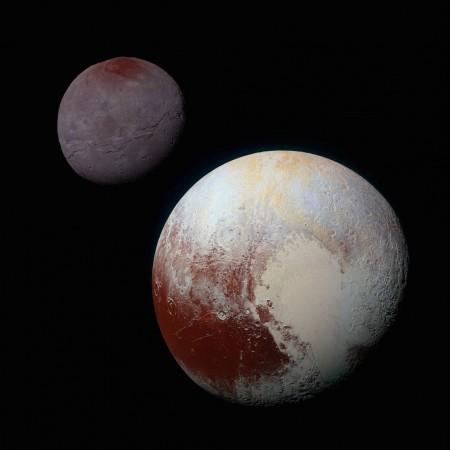Pluto was dethroned as a planet in 2006 by the International Astronomical Union (IAU). The organization defined a planet as a body that can clear its own orbit around the Sun. A "planet" has to be the largest gravitational force within its orbit.
Pluto, unfortunately, did not clear its orbit and Neptune, its nearest neighbour's gravity influences it. Pluto is also known to share its orbit with a number of Kuiper belt objects and frozen gasses, notes a report by Phys.org.
This disqualified Pluto from its planet status. Planetary scientist Philip Metzger from the Florida Space Institute, in a recent paper found that this method to qualify planets is not really supported in existing research literature.
As part of the study, Metzger reportedly reviewed scientific literature from over the last 200 years and found that there is only one publication, that too dating from 1802 that makes use of "clearing-orbit" as a requirement to achieve planetary status. He argues that this classification was based on reasoning that has since been disproven.
Metzger goes on to say that planetary scientists since Galilean times have even considered the large moons of Saturn and Jupiter like Titan Europa to be planets. "The IAU definition would say that the fundamental object of planetary science, the planet, is supposed to be a defined on the basis of a concept that nobody uses in their research," Metzger said. As a result, he pointed out that, "it would leave out the second-most complex, interesting planet in our solar system."

He called the IAU definition "sloppy" because now there are over 100 examples of scientists using the term planet to describe bodies that clearly violate the definition, simply because the word is "functionally useful".
He also pointed out that the AIU "didn't say what they meant by clearing their orbit. If you take that literally, then there are no planets, because no planet clears its orbit."

The astronomer also showed that literature review defines planets more accurately. The real division, he said, between planets and other space rocks like as asteroids, was put forward by Gerard Kuiper in a paper published in the early 1950s. The distinction drawn was based on how these bodies were created.
Metzger himself proposed a new way to classify a planet, notes the report. His recommendation is that a celestial body should be called a planet if it is simply large enough so that its gravity allows it to gain a spherical shape.
Metzger explained that it is not an arbitrary definition. "It turns out this is an important milestone in the evolution of a planetary body, because apparently when it happens, it initiates active geology in the body."
Pluto is spherical and as a result is known to have an underground ocean, multilayered atmosphere, organic compounds, as well as evidence of ancient lakes and multiple moons, he added.
Comparing it to the rest of the Solar System, he said that Pluto is more dynamic and alive than Mars. In fact, "the only planet that has more complex geology is the Earth."
The study was published in the journal Icarus.


















